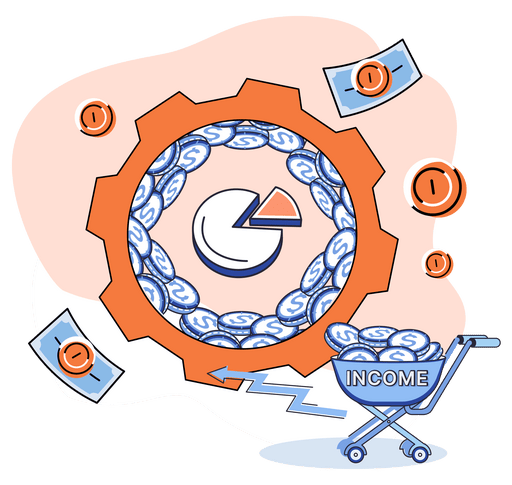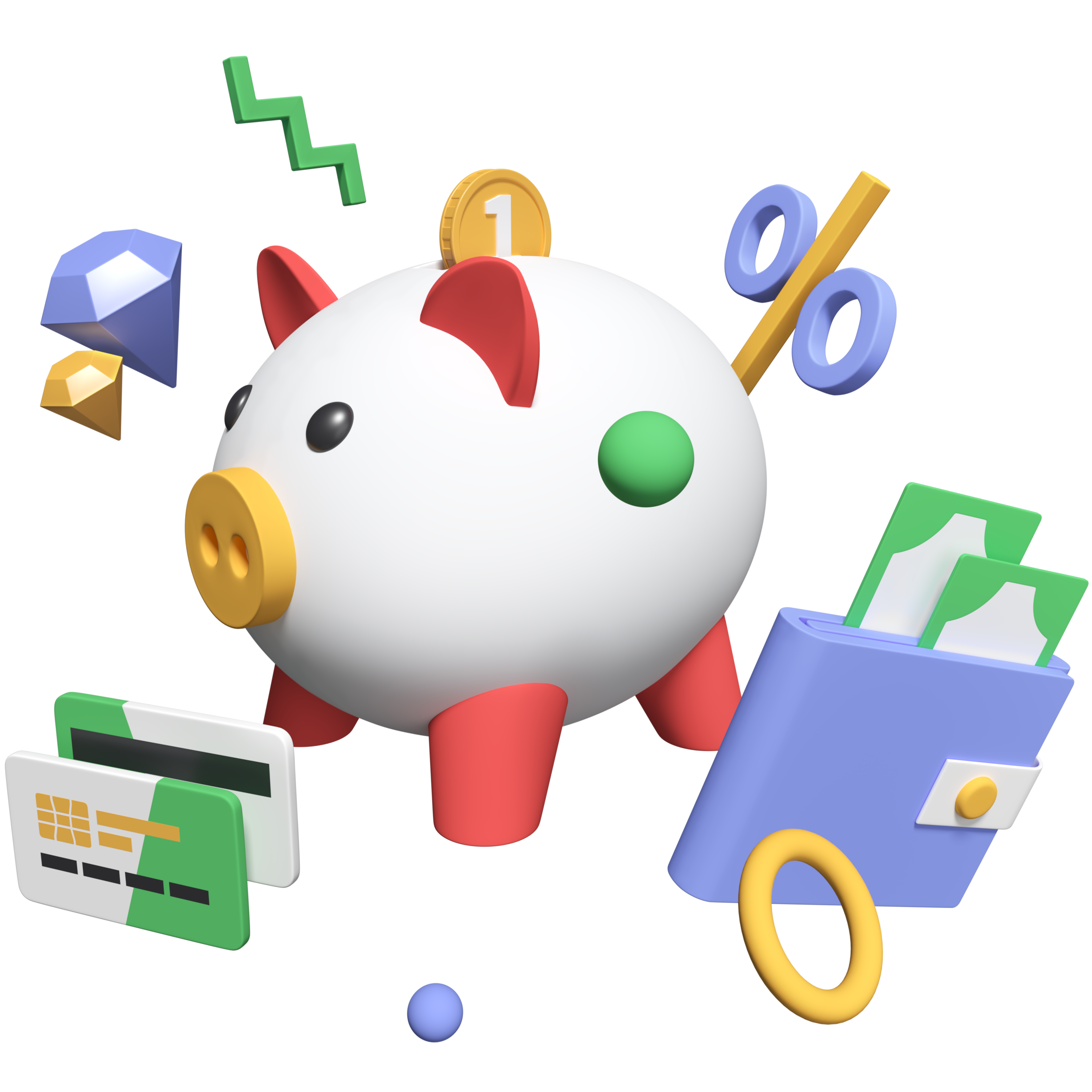From a high level, this article discusses the structure of the final interest rates offered by lenders. The goal is to show you how loan rates are calculated, using a structure that I regularly see in the marketplace, and use myself.
The short version is lenders reference an interest rate from an index and add their margin. The final value is the rate offered. Typically, the lender’s margin is based on the risk of the loan. Perhaps in another article, I will dive deeper into loan risk. For now, toward the end of this article, I will only briefly discuss loan risk.
The tables of Sample Indexes, or interest rates, are updated daily at the bottom of the article. I suggest you bookmark this page and check back often to see how the market has impacted interest rates.
Each Lender Chooses Their Index
Keep in mind each index is affected by market conditions uniquely. Also, each lender chooses the index that fits their financial model best. The indexes noted in this article are the most common indexes I have seen for church loans and are meant for reference. Talk to your lender for their specific index and margin for your unique loan request.

Components of An Interest Rate
Most church lenders will include all internal fees in the rate they quote, but it is always a good idea to ask about total costs and fees when applying for a loan. Total lender charges will include the lender’s fees and external fees related to the loan. Such as the cost of an appraisal, title, environmental, and the cost of any other third-party the lender engages in closing the loan.
Loan Broker/Consultant Fee
While not required, if a loan broker/consultant is engaged by the Church/borrower, be sure to include their costs in the budget. The fee can vary from agent to agent. Note that broker/consultant fees are not part of the external fees noted above.
Total Costs
Now for a quick overview of the total cost, let’s dive into the components of an interest rate. While it may vary from lender to lender, you can expect the lender to come up with an interest rate by calculating the total of the rate from an index and their margin.
The index is a market value you should be able to track yourself. While the margin is based on an internal return the lender needs to make. The margin needs to be sufficient to cover operating costs and make a profit.
Loan Amount
Often the loan amount will be a factor that the lender uses when calculating interest rates for the loan. Lower loan amounts typically require as much or more work than larger loan requests. For this reason, you could expect to see a higher interest rate for smaller loan requests; as set by the lender.
However, not all church lenders subscribe to this method. In that case, the loan amount does not affect the interest rate. When you talk to your lender about loan options, check if the loan amount affects the interest rate. It could be helpful when strategizing the loan structure and the best lender to select.

Common Indexes Used by Church Lenders
There are many indexes that a lender uses to calculate the interest rate for a church loan. Typical indexes include the Wall Street Journal Prime Rate (Prime Rate) and the Daily Treasury Rates. In commercial applications, the Prime Rate is typically used to determine the rate on revolving credit, like a commercial credit line or corporate credit card. However, a financial institution or mortgage lender will use the US Treasury Daily Rate for commercial real estate loans.
Monitor the Index
Once you know which index the financial institution is using, you can start monitoring it and keep up on market news that can affect the rate trends. To give you an idea of how an index can vary daily, the table below is from the US Treasury Daily Rate index and is updated anytime the index is updated. In recent years, there was not much variance from day to day. The current market conditions have changed that. From week to week, you may notice changes varying from one basis point to several points.
What does Basis Point Mean?
Mortgage lenders will use the terms Basis Point or Basis Points to refer to interest rates. When you regularly talk about loan rates, it is easier to use basis points. A basis point is the same as 0.01%. So ten basis points are written as 0.10%. At the same time, a whole point is 1.00%.
What is the Margin?

The index is the benchmark “cost” a lender uses as the base of the interest rate based on economic factors. In contrast, the margin is the percentage a mortgage lender needs to make to cover internal costs like the cost of funds, adjust for the loan risk, and yield a target profit.
Cost of Funds
This is a term used to refer to the internal costs a lender has incurred from operations. Costs include salaries, marketing, interest rates paid on deposits, and more.
Target Profit
Like any other organization, a lender needs to produce cash flow, or they will fail. Each lender has varying profitability goals. These goals will vary from quarter to quarter, and may change quickly based on market conditions and the current financial performance of the lender.
Where does my credit score come into play?
While this article is not focused on credit risk, I find it hard to write an article on how interest rates are determined and not at least mention credit score. Credit scores are a component of loan risk, but they do not tend to play as big of a role in Church Real Estate loans as they do in consumer loans. With that said, it is still important to know your Churches credit score and clean up anything that is not accurate.
Loan Risk
In addition to the financial strength of the Church, the loan terms and collateral affect the loan risk. More risk might require a higher interest rate. In comparison, lower risk may allow for a lower interest rate.

Credit Report
For personal loans, such as auto loans or home mortgage loans, the borrowers credit score plays a big factor in determining a persons “Character,” one of the “C’s” of underwriting.
In commercial lending, such as for Church Loans, there are two primary credit reports that can be pulled. As with personal loans, the lender can choose which report to pull. Either with Dun & Bradstreet PAYDEX Score or Experian Intelliscore Plus. With each, the closer to 100 your score is, the better the rating.
Please note that while skipping payments can be viewed negatively, making your payments on time is not a bonus. Making on-time payments for the life of the loan, or lease, is a requirement. There are more financial decisions Church leadership teams make that have a larger impact on reducing risk. If you’d like to learn more about them, reach out to me.

Interest Rate Locks
Not all lenders offer interest rate locks, and if they do, they don’t always offer them. Market conditions can affect a lenders willingness to offer a interest rate lock. Unless you have a signed document identifying the interest rate you have locked in, it is safe to assume your rate will float until the loan docs are drawn, or the loan is booked.
Interest Rate locks are are rarely free, but that does not mean they have to cost you. What I mean by this is some rate locks are offered with a deposit, and not a fee. If the interest rate lock is available with a deposit, when the loan books, the fee paid goes towards closing or is refunded to you at closing. Should you cancel the loan, the deposit is non-refundable.
Whereas, a fee for the interest rate lock is an additional lender cost. No matter what happens with the loan, the fee is non-refundable.
In both cases, the funds for the interest rate lock are given to the lender at the time the interest rate is locked. Be sure you ask what your lender offers and know the terms before you authorize payment of any kind.
Float
This term is used to refer to an interest rate that is not set. While a rate floats, the actual rate of the loan request may vary by market conditions. At the time of this writing, interest rates have risen substantially from the same time the prior year.
In an environment where interest rates are changing constantly, a floating rate could mean a lower/higher interest rate from the time of applying for the loan to signing loan documents. Depending on the direction interest rates are going, you may need a bigger down payment to bring the monthly payment into an affordable range.
Fixed Interest Rates
If you have applied for a car loan or a home loan, you have experienced a fixed rate. This is when the interest rate is fixed, does not change, for the term of the loan.
The most common interest rate terms offered for Church Real Estate loans are three, five, seven, and ten year terms. In some cases, 15, and 20-year options are also available, but not as common.
Depending on market conditions, such as those at the time of this writing, long term rates over 7-years are not available to borrowers. This is because the economic factors associated with offering long term rates are not favorable to the lender; there is too much risk.
In most cases, a fixed interest rate is a preferable situation for a Church Real Estate loan. However, there are some cases where Variable Interest Rates are more attractive.
Variable Interest Rates
Variable Interest rates are calculated just like a fixed rate, but may use a different index. Another difference is the rate changes during the loan term. Typically, the frequency if monthly, but the frequency that the rate is “subject to change” varies from lender to lender.
Because variable interest rates offer the lender an opportunity to maintain their margin as rates increase over the life of the loan, the lender may offer a lower interest rate initially. While a lower interest rate is a feature attraction of variable interest rates, some market conditions, such as the case at the time of writing this article, can push variable rates to a point equal or in excess of fixed rates.
Due to the risk of a higher interest rate to the borrower, variable interest rates are common for revolving credit needs. Where the loan balance is paid off within a year. For example, a credit line, credit card.
An exception of sorts. In the case of a Construction Real Estate loan, variable interest rates are used during the construction period, or draw period. In most cases, the draw period is excess one-year. Reach out to me to learn more about Construction Loans for Churches.
Sample Indexes
As noted above, there are several indexes that a lender can use to calculate their loan interest rates. The tables below are the common indexes I have used. Where the Constant Maturity Treasury Daily Rate, or CMT Index, has been referenced for Real Estate loan interest rates, the Wall Street Journal Prime Rate, or WSJ Prime Index, has been referenced for revolving credit interest rates. Such as mentioned above.
How to use the index tables
The indexes referenced below are setup to show the latest rates available from the FRED® API.
Observation Date
In some cases, the data is as current as the close of the prior business day, and in other cases, the data is one or more business days behind. Each table will reflect the date of observation for the content within.
Referencing A Rate
To make it easier to find the correct index, the CMT index table groups several indexes into one table. Most lenders will use each term as the index for the corresponding loan term they are offering. For example, if the lender is offering a 3-year fixed rate, they might use the 3YR as the index for the interest rate. Whereas, for a 7-year fixed rate, they may use the 7YR as the index.
Unlike the group of indexes in the CMT table, the WSJ Prime table is a single index. Because this index is often associated with variable interest rates, it can have a constant impact on your budget over time and should be monitored regularly.
No matter which index you reference, be sure to include the lender’s margin for the final interest rate. Failure to do so could adversely affect your monthly loan payment in your project budget.
CMT Daily Index"Constant Maturity Treasury Daily Rate"Fri Apr 05, 2024 | |
|---|---|
| Index | Rate |
| 3YR | 4.54% + Lender's Margin |
| 5YR | 4.38% + Lender's Margin |
| 7YR | 4.39% + Lender's Margin |
| 10YR | 4.39% + Lender's Margin |
| 20YR | 4.65% + Lender's Margin |
| 30YR | 4.54% + Lender's Margin |
| This product uses the FRED® API but is not endorsed or certified by the Federal Reserve Bank of St. Louis. | |
WSJ Prime Rate Index"Wall Street Journal Prime Rate"Fri Mar 29, 2024 | |
|---|---|
| Rate | 8.50% + Lender's Margin |
| This product uses the FRED® API but is not endorsed or certified by the Federal Reserve Bank of St. Louis. | |

